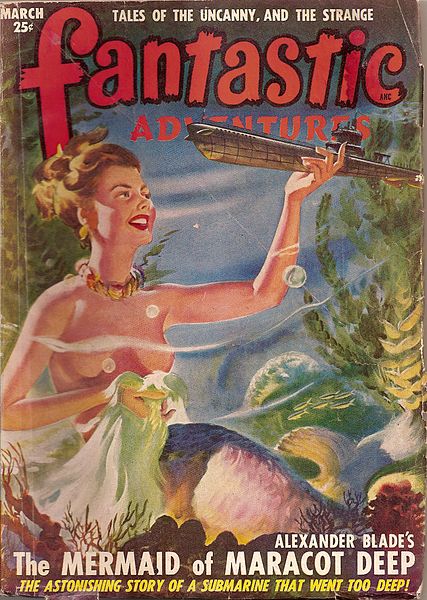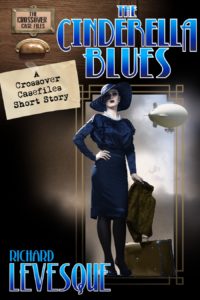Sub-Plots (not the kind with periscopes, though)
Last post, I talked a bit about character motivation. Think of this as Part 2, but with a twist.
To recap, briefly, if we’re looking at a major character, readers need to know what motivates that character, what gets him or her going, what causes the character to risk life and limb or to dig for the truth. If it’s something simple like greed or sex, you may not end up with a strong enough character or plot–and by strong I actually mean strong, as opposed to popular. If you’re going for popular, then greed or sex or some other Deadly Sin is likely going to work better for you. But if you’re going for substance, then throw something else in along with that Deadly Sin. If the motivation is more complex and gets the character into a dilemma or two, then you’ve got something interesting on your hands, and also something readers are likely to want to follow to the end.
But how do you get that kind of complexity into your novel? The answer, often, is to work with sub-plots. Think about your favorite novel. It probably didn’t have just one plot line, no straight A to B to C story line that you could diagram with your eyes closed. No, more than likely there are threads or branches, things that are happening at the same time as the main action, and which will intersect along the way to throw in a twist for the main character and (even better) for the reader.
If you’ve read the books in the Game of Thrones series, then you’ve seen an example of sub-plots on steroids. Martin keeps all those threads going in book after book, each one affecting the others. Neal Gaiman is another writer who’s a master at weaving a multi-threaded plot, especially in Neverwhere where all the sub-plots come together at the end to tie everything together neatly.
In both of those examples, the authors are working with multiple points of view, and that can make it easier. In Take Back Tomorrow, I had different chapters told from different characters’ POV, and it allowed their back stories and motivations to come into play pretty naturally as their different plot lines diverged and intersected.
Working with a single POV can make the introduction of sub-plots a bit more challenging, but it’s worth working at. This was my challenge in working on Strictly Analog. My first run-through with the plot stuck to my original idea, which was to have my near-future detective in a dystopian California discover a hidden truth about the state’s past while investigating a missing person. It turned out that the missing person had been keeping the secret of this past atrocity, which is what led to him being missing in the first place. But in looking over the plot outline, and getting feedback, I realized that it was just a straight shot from beginning to end–investigating the missing person led to finding out the big truth. The end. Kind of boring.
So I had to let that idea go and make the character more complex. I gave him a daughter, better yet an estranged daughter, one who’d gotten herself into trouble. Now the character had more complex motivation, and the back story of the daughter’s troubles, and another back story about how the hero and daughter had become estranged all worked their way into sub-plots that came together neatly in the end. I added a few more sub-plots having to do with the missing person, getting into why he’d gone missing, what motivated him and why. And it all comes together in the end. Not easy to do, but far more interesting and satisfying than my original concept for the book.
So where does that lead us? If you want to get away from the straight-line plot (think of that as the flat-line plot), start with your character’s motivations, and don’t be satisfied with something simple. Complexity makes a character interesting–for the reader and for other characters. Let those motivations develop into sub-plots and work at them, shaping them until you see them start coming together with other characters’ motivations and back stories. And remember that sometimes in developing sub-plots, a writer first needs to be open to them, which means being willing to abandon the Big Idea in favor of a few smaller ones that add up to something bigger still–the reader’s engagement.
Without that, it’s all just pixels.
Game of Thrones Motivation Neil Gaiman Neverwhere Strictly Analog Sub-Plots Take Back Tomorrow







